Jennifer Bohnhoff's Blog, page 12
October 19, 2023
Ypres: The Belgian Town with Many Names and a Lot of History
In 2019, my husband and I were able to tour the World War I battlefields in Belgium and France. We visited many cities and towns, but my favorite was Ypres, a town with many names and a lot of history.
Ypres is the third largest city in the Flanders, right behind Ghent and Bruges. Its official name is its Flemish one, Leper, but it is most commonly called by its French name, Ypres. It most likely got its name from its proximity to the Yperlee, or Leperlee, River. During World War I, British soldiers often renamed the places whose names felt strange to their tongues. The town of Bailleul became Baloo, Étaples became Eat Apples, Foncquevillers.was called Funky Villages, and Ypres became Wipers..
Ypres is an ancient town. The Romans raided it in the first century BC, mentioning it in their records by location. The first written record of the name is from 1066.
During the Middle Ages, Ypres became a major cloth-weaving city. It was such an important trading partner, its linen so valuable to the English that it is mentioned in the Canterbury Tales. England's Edward III offered economic incentives and protection to Flemish weavers, who migrated to the island nation in large numbers.Ypres cloth, both linen and woolen, was available as far away as the city of Novgorod, in Kievan Rus. Its population grew, possibly to as large as 80,000. It was during this peak of power that the famous Cloth Hall was built. Erected between 1260 and 1304, it was a jewel of gothic architecture and a testament to the riches that were pouring into Ypres. Behind it sits Saint Martin's Cathedral, which was built in 1221. Above: The Cloth Guild Hall. Below: the Cathedral Author's photos.
Above: The Cloth Guild Hall. Below: the Cathedral Author's photos. 
 A section of the old town walls Ypres had long been fortified to keep out invaders. Parts of the early ramparts, dating from 1385, still survive near the Rijselpoort (Lille Gate). Over time, the earthworks were replaced by sturdier masonry and earth structures and a partial moat. Ypres was further fortified in the 17th and 18th centuries. These fortifications did not always protect the city, and the devastation of war and siege. The city has been under French, Spanish, and Habsburg control. Its population dwindled to about 5,000.
A section of the old town walls Ypres had long been fortified to keep out invaders. Parts of the early ramparts, dating from 1385, still survive near the Rijselpoort (Lille Gate). Over time, the earthworks were replaced by sturdier masonry and earth structures and a partial moat. Ypres was further fortified in the 17th and 18th centuries. These fortifications did not always protect the city, and the devastation of war and siege. The city has been under French, Spanish, and Habsburg control. Its population dwindled to about 5,000.
By the turn of the 20th century, the town looked old and worn. An extensive rebuilding program restored the Cloth Hall and Cathedral to their former glories. The town's restored beauty was not to last, however. Because it stood in the path of Germany's Schlieffen Plan, Ypres occupied a strategic position during the First World War. Belgium's neutrality was guaranteed by Britain, bringing the British Empire into the war and many hundreds of thousands of British soldiers into the Ypres area. The German army bombarded the city until it was reduced to ruins. The last inhabitants abandoned the city in 1915. By 1917 not a single house or tree remained standing.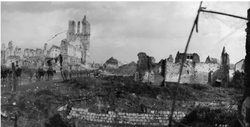 Canadian troops passing the ruins of the Cloth Hall. Image from Library and Archives Canada After the war the town was extensively rebuilt using money paid by Germany in reparations. The main square, including the Cloth Hall, town hall, and Cathedral were rebuilt based on the renovation plans from before the war. Today, Ypres is home to about 34,900 inhabitants. The restored Cloth Hall now houses In Flanders Fields Museum, which is dedicated to Ypres's role in the First World War and named for the poem by Canadian John McCrae. St. George's Chapel, which faces the Cathedral, remains a center of British culture in the town and a pilgrimage site for British Citizens who lost loved ones during WWI. The Menin Gate, in the city's east walls, holds the names of soldiers of the British Commonwealth who fell near Ypres before August 16, 1917 but who have no known grave. Soldiers who died later are commemorated elsewhere. As graves are identified, the names of those buried in them are removed from the Gate.
Canadian troops passing the ruins of the Cloth Hall. Image from Library and Archives Canada After the war the town was extensively rebuilt using money paid by Germany in reparations. The main square, including the Cloth Hall, town hall, and Cathedral were rebuilt based on the renovation plans from before the war. Today, Ypres is home to about 34,900 inhabitants. The restored Cloth Hall now houses In Flanders Fields Museum, which is dedicated to Ypres's role in the First World War and named for the poem by Canadian John McCrae. St. George's Chapel, which faces the Cathedral, remains a center of British culture in the town and a pilgrimage site for British Citizens who lost loved ones during WWI. The Menin Gate, in the city's east walls, holds the names of soldiers of the British Commonwealth who fell near Ypres before August 16, 1917 but who have no known grave. Soldiers who died later are commemorated elsewhere. As graves are identified, the names of those buried in them are removed from the Gate.
Every evening at eight o'clock, traffic around the imposing arches of the Menin Gate Memorial stops while buglers sound the "Last Post." During the Second World War Germans who occupied the city prohibited the ceremony, so it was hosted at Brookwood Military Cemetery in England. The ceremony resumed on September 6, 1944 the day the city was liberated, even though there was still heavy fighting in other parts of the town. If you were to walk through Ypres today without knowing its history, you might think what a cute and quaint medieval town it is. But the gothic buildings are all new, rebuilt after the horror of war had reduced them to rubble. And although the buildings are rebuilt, the memory of trauma remains. Ypres is not a town that will ever forget the horror it went through a hundred years ago. Although she fell in love with Ypres, the scenes in Jennifer Bohnhoff's WWI novel A Blaze of Poppies do not take place in this area, but farther to the south, in France.
Although she fell in love with Ypres, the scenes in Jennifer Bohnhoff's WWI novel A Blaze of Poppies do not take place in this area, but farther to the south, in France.
One of the reasons she so loved this area is that her guide, Iain McHenry, breathed so much life into the area. An historian and the author of Subterranean Sappers: A History of 177 Tunnelling Company RE from 1915 to 1919, the definitive book on WWI sappers in the Ypres Salient, he comes highly recommended for the breadth of his knowledge of the area and its battles.
Ypres is the third largest city in the Flanders, right behind Ghent and Bruges. Its official name is its Flemish one, Leper, but it is most commonly called by its French name, Ypres. It most likely got its name from its proximity to the Yperlee, or Leperlee, River. During World War I, British soldiers often renamed the places whose names felt strange to their tongues. The town of Bailleul became Baloo, Étaples became Eat Apples, Foncquevillers.was called Funky Villages, and Ypres became Wipers..
Ypres is an ancient town. The Romans raided it in the first century BC, mentioning it in their records by location. The first written record of the name is from 1066.
During the Middle Ages, Ypres became a major cloth-weaving city. It was such an important trading partner, its linen so valuable to the English that it is mentioned in the Canterbury Tales. England's Edward III offered economic incentives and protection to Flemish weavers, who migrated to the island nation in large numbers.Ypres cloth, both linen and woolen, was available as far away as the city of Novgorod, in Kievan Rus. Its population grew, possibly to as large as 80,000. It was during this peak of power that the famous Cloth Hall was built. Erected between 1260 and 1304, it was a jewel of gothic architecture and a testament to the riches that were pouring into Ypres. Behind it sits Saint Martin's Cathedral, which was built in 1221.
 Above: The Cloth Guild Hall. Below: the Cathedral Author's photos.
Above: The Cloth Guild Hall. Below: the Cathedral Author's photos. 
 A section of the old town walls Ypres had long been fortified to keep out invaders. Parts of the early ramparts, dating from 1385, still survive near the Rijselpoort (Lille Gate). Over time, the earthworks were replaced by sturdier masonry and earth structures and a partial moat. Ypres was further fortified in the 17th and 18th centuries. These fortifications did not always protect the city, and the devastation of war and siege. The city has been under French, Spanish, and Habsburg control. Its population dwindled to about 5,000.
A section of the old town walls Ypres had long been fortified to keep out invaders. Parts of the early ramparts, dating from 1385, still survive near the Rijselpoort (Lille Gate). Over time, the earthworks were replaced by sturdier masonry and earth structures and a partial moat. Ypres was further fortified in the 17th and 18th centuries. These fortifications did not always protect the city, and the devastation of war and siege. The city has been under French, Spanish, and Habsburg control. Its population dwindled to about 5,000. By the turn of the 20th century, the town looked old and worn. An extensive rebuilding program restored the Cloth Hall and Cathedral to their former glories. The town's restored beauty was not to last, however. Because it stood in the path of Germany's Schlieffen Plan, Ypres occupied a strategic position during the First World War. Belgium's neutrality was guaranteed by Britain, bringing the British Empire into the war and many hundreds of thousands of British soldiers into the Ypres area. The German army bombarded the city until it was reduced to ruins. The last inhabitants abandoned the city in 1915. By 1917 not a single house or tree remained standing.
 Canadian troops passing the ruins of the Cloth Hall. Image from Library and Archives Canada After the war the town was extensively rebuilt using money paid by Germany in reparations. The main square, including the Cloth Hall, town hall, and Cathedral were rebuilt based on the renovation plans from before the war. Today, Ypres is home to about 34,900 inhabitants. The restored Cloth Hall now houses In Flanders Fields Museum, which is dedicated to Ypres's role in the First World War and named for the poem by Canadian John McCrae. St. George's Chapel, which faces the Cathedral, remains a center of British culture in the town and a pilgrimage site for British Citizens who lost loved ones during WWI. The Menin Gate, in the city's east walls, holds the names of soldiers of the British Commonwealth who fell near Ypres before August 16, 1917 but who have no known grave. Soldiers who died later are commemorated elsewhere. As graves are identified, the names of those buried in them are removed from the Gate.
Canadian troops passing the ruins of the Cloth Hall. Image from Library and Archives Canada After the war the town was extensively rebuilt using money paid by Germany in reparations. The main square, including the Cloth Hall, town hall, and Cathedral were rebuilt based on the renovation plans from before the war. Today, Ypres is home to about 34,900 inhabitants. The restored Cloth Hall now houses In Flanders Fields Museum, which is dedicated to Ypres's role in the First World War and named for the poem by Canadian John McCrae. St. George's Chapel, which faces the Cathedral, remains a center of British culture in the town and a pilgrimage site for British Citizens who lost loved ones during WWI. The Menin Gate, in the city's east walls, holds the names of soldiers of the British Commonwealth who fell near Ypres before August 16, 1917 but who have no known grave. Soldiers who died later are commemorated elsewhere. As graves are identified, the names of those buried in them are removed from the Gate.Every evening at eight o'clock, traffic around the imposing arches of the Menin Gate Memorial stops while buglers sound the "Last Post." During the Second World War Germans who occupied the city prohibited the ceremony, so it was hosted at Brookwood Military Cemetery in England. The ceremony resumed on September 6, 1944 the day the city was liberated, even though there was still heavy fighting in other parts of the town. If you were to walk through Ypres today without knowing its history, you might think what a cute and quaint medieval town it is. But the gothic buildings are all new, rebuilt after the horror of war had reduced them to rubble. And although the buildings are rebuilt, the memory of trauma remains. Ypres is not a town that will ever forget the horror it went through a hundred years ago.
 Although she fell in love with Ypres, the scenes in Jennifer Bohnhoff's WWI novel A Blaze of Poppies do not take place in this area, but farther to the south, in France.
Although she fell in love with Ypres, the scenes in Jennifer Bohnhoff's WWI novel A Blaze of Poppies do not take place in this area, but farther to the south, in France.One of the reasons she so loved this area is that her guide, Iain McHenry, breathed so much life into the area. An historian and the author of Subterranean Sappers: A History of 177 Tunnelling Company RE from 1915 to 1919, the definitive book on WWI sappers in the Ypres Salient, he comes highly recommended for the breadth of his knowledge of the area and its battles.
Published on October 19, 2023 23:00
October 5, 2023
Mangia like the Military
 Robot8A, CC BY-SA 4.0 , via Wikimedia Commons The October/November/December 2023 edition of AAA Explorer had an interesting article entitled The Great Roman Pasta Mystery. In it the author, David Farley, explored the origins of pasta carbonara. The dish, a luscious mixture of egg, pasta, guanciale, ground pepper and pecorino cheese, is a distinctly Roman dish. My Americanized version uses bacon instead of guanciale, parmesan for pecorino, and adds evaporated milk for creaminess.. The mystery is why there are no old recipes for the dish that is considered traditional. The first published recipe dates from 1952. After talking with many food experts, Farley concludes that pasta carbonara was invented by a clever Roman chef during World War Two, but in the aftermath of war, Italians, hungry both physically and emotionally, forgot the newness of the dish and adopted it into their traditions.
Robot8A, CC BY-SA 4.0 , via Wikimedia Commons The October/November/December 2023 edition of AAA Explorer had an interesting article entitled The Great Roman Pasta Mystery. In it the author, David Farley, explored the origins of pasta carbonara. The dish, a luscious mixture of egg, pasta, guanciale, ground pepper and pecorino cheese, is a distinctly Roman dish. My Americanized version uses bacon instead of guanciale, parmesan for pecorino, and adds evaporated milk for creaminess.. The mystery is why there are no old recipes for the dish that is considered traditional. The first published recipe dates from 1952. After talking with many food experts, Farley concludes that pasta carbonara was invented by a clever Roman chef during World War Two, but in the aftermath of war, Italians, hungry both physically and emotionally, forgot the newness of the dish and adopted it into their traditions. 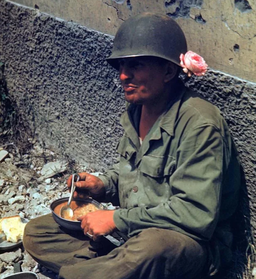 Ferracci asserts that a Roman chef, knowing that Americans ate eggs and bacon for breakfast, managed to pick up some of the powdered egg and dried bacon rations that were on the black market. Roman food historian Emilio Ferracci explained to Farley that American soldiers in Rome were known to eat something they called “spaghetti breakfast,” which included these ingredients. Romans began eating the dish, too, adapting it with local ingredients.
Ferracci asserts that a Roman chef, knowing that Americans ate eggs and bacon for breakfast, managed to pick up some of the powdered egg and dried bacon rations that were on the black market. Roman food historian Emilio Ferracci explained to Farley that American soldiers in Rome were known to eat something they called “spaghetti breakfast,” which included these ingredients. Romans began eating the dish, too, adapting it with local ingredients. Sumeet Jain from San Francisco, USA, CC BY-SA 2.0 , via Wikimedia Commons Spaghetti carbonara is not the only example of food influenced by the military. In her book Combat-Read Kitchen, author Anastacia Marx de Salcedo explored how many of the foods Americans eat were first created to feed the military. One example is cheese. During World War II, American GIs craved cheese, but it was heavy and difficult to store and ship. Attempts to dry the product were successful on many fruits, vegetables and eggs did not work for cheese, which crumpled. However, after much experimentation, a USDA dairy scientist named George Sanders developed a cheese powder that was shelf stable and tasted good. Two years later the war ended and the military found itself with tons of dehydrated cheese that they no longer needed. Their solution was to sell it back to food manufacturers at steep discounts. One company who took advantage of this were the Frito Company, who mixed the cheese powder with cornmeal and water and introduced Cheetos to the nation in 1948. The other company that benefitted was Kraft, which had begun experimentation with processed cheeses before the war, but now changed their ubiquitous Kraft Dinners to use the powder instead of grated cheese.
Sumeet Jain from San Francisco, USA, CC BY-SA 2.0 , via Wikimedia Commons Spaghetti carbonara is not the only example of food influenced by the military. In her book Combat-Read Kitchen, author Anastacia Marx de Salcedo explored how many of the foods Americans eat were first created to feed the military. One example is cheese. During World War II, American GIs craved cheese, but it was heavy and difficult to store and ship. Attempts to dry the product were successful on many fruits, vegetables and eggs did not work for cheese, which crumpled. However, after much experimentation, a USDA dairy scientist named George Sanders developed a cheese powder that was shelf stable and tasted good. Two years later the war ended and the military found itself with tons of dehydrated cheese that they no longer needed. Their solution was to sell it back to food manufacturers at steep discounts. One company who took advantage of this were the Frito Company, who mixed the cheese powder with cornmeal and water and introduced Cheetos to the nation in 1948. The other company that benefitted was Kraft, which had begun experimentation with processed cheeses before the war, but now changed their ubiquitous Kraft Dinners to use the powder instead of grated cheese.
It’s hard to think of Cheetos as a biproduct of the military/industrial complex, but it is! Spaghetti Carbonara This version is very American, and may be similar to the original version whipped up by Roman chefs who wanted to sell their food to American GIs. It isn't fancy, but it is made with items that are typically in an American home and are shelf stable. This is rich comfort food at bargain prices. Cook al dente: 4 servings (8 oz) spaghetti. Drain in colander.
Cook until crisp: 2 slices bacon. Set aside on paper towels, wipe out the pan.
Combine and heat in pan until thick: 1 beaten egg, 1 cup evaporated milk, 1/2 cup frozen peas, 1/4 cup chopped red pepper.
Stir in: 1/2 cup parmesan cheese, the crumbled bacon, and pasta.
Serves 4
Jennifer Bohnhoff writes historical fiction for middle grade through adult readers. You can learn more about her and her books here.
Published on October 05, 2023 13:41
September 29, 2023
The Mysterious Medallion Trees of the Sandia Mountains
 I love having the Sandia Mountains right out my back door. There are lots of trails: some challenging, some of them a leisurely walk in the woods. Like all forested areas, we have beautiful trees and wildflowers, lots of birds and deer and the occasional bear. But one of the things that makes the Sandias unique are the Medallion trees.
I love having the Sandia Mountains right out my back door. There are lots of trails: some challenging, some of them a leisurely walk in the woods. Like all forested areas, we have beautiful trees and wildflowers, lots of birds and deer and the occasional bear. But one of the things that makes the Sandias unique are the Medallion trees.Medallion trees are trees that are marked with silver dollar-sized metal disks. Some are coppery or brassy, while others look to be made from stainless steel or aluminum. Each carries a historical event that took place the same year that the tree was likely germinated. Many also number the tree. I’ve seen numbers as high
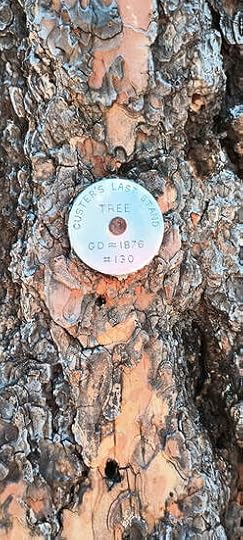 as #123, indicating that there are well over 100 trees, although the only list I’ve ever found tops out in the 80s. The trees are not numbered in chronological order. Tree #1, which germinated sometime around 1652, marks the invention of the frankfurter. The oldest tree is #19, which commemorates the crowning of Robert II of Scotland in1371. The youngest, marking Alaska becoming the 49th state, sprouted in 1959. #47, the George Washington Birthday Tree, has fallen and the medal is on the lower side, making it difficult to see.
as #123, indicating that there are well over 100 trees, although the only list I’ve ever found tops out in the 80s. The trees are not numbered in chronological order. Tree #1, which germinated sometime around 1652, marks the invention of the frankfurter. The oldest tree is #19, which commemorates the crowning of Robert II of Scotland in1371. The youngest, marking Alaska becoming the 49th state, sprouted in 1959. #47, the George Washington Birthday Tree, has fallen and the medal is on the lower side, making it difficult to see. No one knows who began marking the Medallion trees. Sources suggest that the effort began in the last 1920s, and that perhaps Civilian Conservation Corps workers might have started it. Whoever it was drilled core samples into some of the largest trees in the Sandias and counted the rings before they fabricated the medallions, then hiked back to install the disks over the core sample holes. It was definitely a labor of love.
 Jennifer Bohnhoff is a writer and former educator who loves getting lost in the mountains on long rambles. To learn more about her and her books, go to her website.
Jennifer Bohnhoff is a writer and former educator who loves getting lost in the mountains on long rambles. To learn more about her and her books, go to her website.
Published on September 29, 2023 15:47
September 21, 2023
The New Mexico National Guard In A Blaze of Poppies
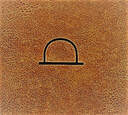 A Blaze of Poppies takes place in Southern New Mexico and France during the tumultuous 1910s. Its main character, Agnes Day, is a ranching woman who is determined to keep her family’s ranch, the Sunset, within the family who’s held it for three generations.
A Blaze of Poppies takes place in Southern New Mexico and France during the tumultuous 1910s. Its main character, Agnes Day, is a ranching woman who is determined to keep her family’s ranch, the Sunset, within the family who’s held it for three generations.The family’s brand is the lazy D, a capital D laid over on its side. The D not only stands for the Days, who’ve owned the ranch since before the Civil War, but on its side it looks like a sunrise.
The man who quietly supports Agnes through difficult times is Will Bowers, a member of the National Guard who is serving border patrol at Camp Columbus.
New Mexico’s National Guard began serving its country before New Mexico was even a state. In 1898, when the Spanish American War broke out, New Mexico Guardsmen helped form the 2nd Squadron, 1st United States Cavalry. This unit was part of Teddy Roosevelt's Rough Riders and were among those who charged up San Juan Hill.
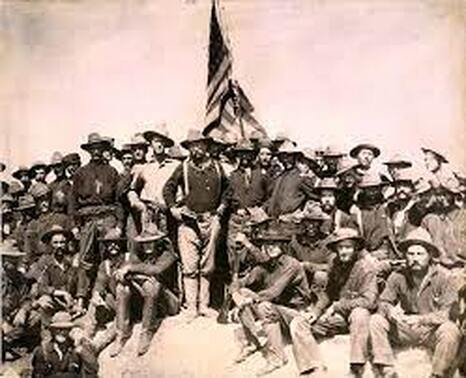 Teddy (center) and some of his Rough Riders. In 1916, when Pancho Villa raided the southern New Mexican town of Columbus, New Mexico’s National Guard, under the command of Black Jack Pershing, pursued the outlaw into Mexico. The Guard spent the next year on this border duty.
Teddy (center) and some of his Rough Riders. In 1916, when Pancho Villa raided the southern New Mexican town of Columbus, New Mexico’s National Guard, under the command of Black Jack Pershing, pursued the outlaw into Mexico. The Guard spent the next year on this border duty.  Pershing was so impressed with the Guards’ performance in the rough field conditions of the desert southwest that he insisted they join the mobilization efforts when the United States entered World War I. New Mexico National Guardsmen were among some of the first to arrive in France. They didn’t, however, go over as a single unit. The First Infantry Regiment was activated into Federal Service and assigned to the 40th Infantry Division. A Battery of Field Artillery was assigned to the 41st Division and became part of the 146th Field Artillery Regiment, which took part in the actions at Champagne-Marne, Alsne-Marne, and Meuse-Argonne.
Pershing was so impressed with the Guards’ performance in the rough field conditions of the desert southwest that he insisted they join the mobilization efforts when the United States entered World War I. New Mexico National Guardsmen were among some of the first to arrive in France. They didn’t, however, go over as a single unit. The First Infantry Regiment was activated into Federal Service and assigned to the 40th Infantry Division. A Battery of Field Artillery was assigned to the 41st Division and became part of the 146th Field Artillery Regiment, which took part in the actions at Champagne-Marne, Alsne-Marne, and Meuse-Argonne.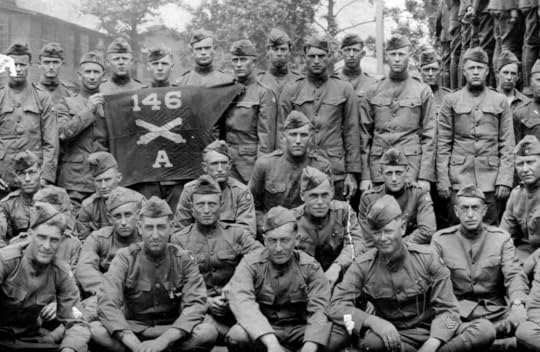 Because the 41st Division was largely made up of soldiers from Oregon and other northwest states that bordered the Pacific Ocean, it was named the "Sunset Division." Its semicircular shoulder patch featured a red background, with a yellow sun setting into a blue sea.
Because the 41st Division was largely made up of soldiers from Oregon and other northwest states that bordered the Pacific Ocean, it was named the "Sunset Division." Its semicircular shoulder patch featured a red background, with a yellow sun setting into a blue sea. 
 When Agnes first sees Will’s patch, she thinks it is a sunrise instead of a sunset. To her, it looks like a fancier version of the lazy D that is the family brand. They are, after all, the Day family, and the ranch is The Sunrise Ranch. She muses that perhaps she should add rays to the lazy D so it will look even more like the image on Will’s patch.
When Agnes first sees Will’s patch, she thinks it is a sunrise instead of a sunset. To her, it looks like a fancier version of the lazy D that is the family brand. They are, after all, the Day family, and the ranch is The Sunrise Ranch. She muses that perhaps she should add rays to the lazy D so it will look even more like the image on Will’s patch. Agnes wants to keep the ranch, and she wants Will to be there with her. But Will has a hidden past that makes him afraid to commit, even to the woman he loves. Read A Blaze of Poppies to find out whether the story ends in sunshine or shadow.
 A Blaze of Poppies is an historical novel set in southern New Mexico at the time of the Pancho Villa Raid and World War I. If you'd like to see pictures that correspond with the story, go to Jennifer's Pinterest page. To buy the novel as an ebook, go to Amazon. A paperback version can be bought at many online booksellers, including Amazon and Bookshop, Signed copies can be bought directly from the author.
A Blaze of Poppies is an historical novel set in southern New Mexico at the time of the Pancho Villa Raid and World War I. If you'd like to see pictures that correspond with the story, go to Jennifer's Pinterest page. To buy the novel as an ebook, go to Amazon. A paperback version can be bought at many online booksellers, including Amazon and Bookshop, Signed copies can be bought directly from the author.
Published on September 21, 2023 19:23
September 13, 2023
The Thiepval Memorial
Back in 2019, when I was researching World War I for A Blaze of Poppies, I had the honor of touring battlefields and memorials in Belgium and France. It was a sobering experience, and one of the most sobering was the memorial outside the little town of Thiepval, in Picardy, France.  The Thiepval Memorial is dedicated to the men of the British Commonwealth who went missing in the Battles that occurred in the Somme between 1915 and 1918 and whose bodies have not been found. Designed by Sir Edwin Landseer Lutyens, one of the most famous architects of the time, it is the only memorial that Edward VIII ever dedicated, since he abdicated soon after.
The Thiepval Memorial is dedicated to the men of the British Commonwealth who went missing in the Battles that occurred in the Somme between 1915 and 1918 and whose bodies have not been found. Designed by Sir Edwin Landseer Lutyens, one of the most famous architects of the time, it is the only memorial that Edward VIII ever dedicated, since he abdicated soon after.
Inside the memorial, a large inscription on an internal surface of the memorial reads:
 Piers of Portland stone
Piers of Portland stone
are engraved with over 72,000 names. 90 per cent of these soldiers died in the first Battle of the Somme, between 1 July and 18 November 1916.
Because the monument is reserved for those missing or unidentified soldiers who have no known grave, a soldier’s name is excised from the wall by filling in the inscription with cement when his body is found and identified. The remains are then given a funeral with full military honors at a cemetery close to the location at which they were discovered. This practice has resulted in numerous gaps in the lists of names. 80 names came off the monument 2018.
 Just behind the Thiepval Memorial lies two cemeteries that commemorate the joint nature of the 1916 offensive. One side of the cemetery holds 300 soldiers of the British Commonwealth under rectangular, white stone headstones inscribed with "A Soldier of the Great War / Known unto God". The other side holds the graves of 300 French soldiers under grey stone crosses that bear the single word "Inconnu" ('unknown'). Most of the soldiers buried here – 239 of the British Commonwealth and 253 of the French – are unidentified. Their bodies were found on the battlefields of the Somme and as far north as Loos and as far south as Le Quesnel, then reburied here between December 1931 and March 1932.
Just behind the Thiepval Memorial lies two cemeteries that commemorate the joint nature of the 1916 offensive. One side of the cemetery holds 300 soldiers of the British Commonwealth under rectangular, white stone headstones inscribed with "A Soldier of the Great War / Known unto God". The other side holds the graves of 300 French soldiers under grey stone crosses that bear the single word "Inconnu" ('unknown'). Most of the soldiers buried here – 239 of the British Commonwealth and 253 of the French – are unidentified. Their bodies were found on the battlefields of the Somme and as far north as Loos and as far south as Le Quesnel, then reburied here between December 1931 and March 1932.
I'm not a numbers person, but over 72,000! Even if I can't really conceive a number that large, I know it is huge. And that's not the number of men who died in the area: it's the number of men who died and whose bodies were never recovered. It's astounding and beyond comprehension.
World War I was supposed to be the Great War: the War to End All Wars. Yet here we are, over a hundred years later and wars rage throughout the globe. Clearly, we have not yet learned the lesson such carnage should have taught us.
 Jennifer Bohnhoff is the author of a number of historical novels for middle grade through adult readers. A Blaze of Poppies is set in New Mexico and the French Battlefields in the time leading up to and including the American involvement in World War I. Her intent in writing the book was not to glorify war, but to give readers a taste of what life might have been like during that tumultuous period.
Jennifer Bohnhoff is the author of a number of historical novels for middle grade through adult readers. A Blaze of Poppies is set in New Mexico and the French Battlefields in the time leading up to and including the American involvement in World War I. Her intent in writing the book was not to glorify war, but to give readers a taste of what life might have been like during that tumultuous period.
 The Thiepval Memorial is dedicated to the men of the British Commonwealth who went missing in the Battles that occurred in the Somme between 1915 and 1918 and whose bodies have not been found. Designed by Sir Edwin Landseer Lutyens, one of the most famous architects of the time, it is the only memorial that Edward VIII ever dedicated, since he abdicated soon after.
The Thiepval Memorial is dedicated to the men of the British Commonwealth who went missing in the Battles that occurred in the Somme between 1915 and 1918 and whose bodies have not been found. Designed by Sir Edwin Landseer Lutyens, one of the most famous architects of the time, it is the only memorial that Edward VIII ever dedicated, since he abdicated soon after. Inside the memorial, a large inscription on an internal surface of the memorial reads:
Here are recorded
names of officers
and men of the
British Armies who fell
on the Somme battlefields
July 1915 February 1918
but to whom
the fortune of war
denied the known
and honoured burial
given to their
comrades in death.
 Piers of Portland stone
Piers of Portland stoneare engraved with over 72,000 names. 90 per cent of these soldiers died in the first Battle of the Somme, between 1 July and 18 November 1916.
Because the monument is reserved for those missing or unidentified soldiers who have no known grave, a soldier’s name is excised from the wall by filling in the inscription with cement when his body is found and identified. The remains are then given a funeral with full military honors at a cemetery close to the location at which they were discovered. This practice has resulted in numerous gaps in the lists of names. 80 names came off the monument 2018.
 Just behind the Thiepval Memorial lies two cemeteries that commemorate the joint nature of the 1916 offensive. One side of the cemetery holds 300 soldiers of the British Commonwealth under rectangular, white stone headstones inscribed with "A Soldier of the Great War / Known unto God". The other side holds the graves of 300 French soldiers under grey stone crosses that bear the single word "Inconnu" ('unknown'). Most of the soldiers buried here – 239 of the British Commonwealth and 253 of the French – are unidentified. Their bodies were found on the battlefields of the Somme and as far north as Loos and as far south as Le Quesnel, then reburied here between December 1931 and March 1932.
Just behind the Thiepval Memorial lies two cemeteries that commemorate the joint nature of the 1916 offensive. One side of the cemetery holds 300 soldiers of the British Commonwealth under rectangular, white stone headstones inscribed with "A Soldier of the Great War / Known unto God". The other side holds the graves of 300 French soldiers under grey stone crosses that bear the single word "Inconnu" ('unknown'). Most of the soldiers buried here – 239 of the British Commonwealth and 253 of the French – are unidentified. Their bodies were found on the battlefields of the Somme and as far north as Loos and as far south as Le Quesnel, then reburied here between December 1931 and March 1932.I'm not a numbers person, but over 72,000! Even if I can't really conceive a number that large, I know it is huge. And that's not the number of men who died in the area: it's the number of men who died and whose bodies were never recovered. It's astounding and beyond comprehension.
World War I was supposed to be the Great War: the War to End All Wars. Yet here we are, over a hundred years later and wars rage throughout the globe. Clearly, we have not yet learned the lesson such carnage should have taught us.
 Jennifer Bohnhoff is the author of a number of historical novels for middle grade through adult readers. A Blaze of Poppies is set in New Mexico and the French Battlefields in the time leading up to and including the American involvement in World War I. Her intent in writing the book was not to glorify war, but to give readers a taste of what life might have been like during that tumultuous period.
Jennifer Bohnhoff is the author of a number of historical novels for middle grade through adult readers. A Blaze of Poppies is set in New Mexico and the French Battlefields in the time leading up to and including the American involvement in World War I. Her intent in writing the book was not to glorify war, but to give readers a taste of what life might have been like during that tumultuous period.
Published on September 13, 2023 23:00
August 23, 2023
An Interesting Connection
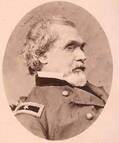 Back in July I wrote a blog about Gabriel Rene Paul, the commanding officer at Fort Union at the time of the Civil War. I had no idea then that I would run across a curious connection to him so soon, but I have: a connection between him and Sacajawea, the young Shoshone woman who traveled with the Lewis and Clark Expedition.
Back in July I wrote a blog about Gabriel Rene Paul, the commanding officer at Fort Union at the time of the Civil War. I had no idea then that I would run across a curious connection to him so soon, but I have: a connection between him and Sacajawea, the young Shoshone woman who traveled with the Lewis and Clark Expedition.
 Not much is actually known about Sacajawea. The teenaged girl left no writings of her own, if indeed she could write. The journals, letters, official records, and reports from the period call her by many names, and often fail to record that she was even present. Author Candy Moulton’s
Sacajawea: mystery, myth and legend
does a great job of piecing together a thorough timeline of her life those few references, then goes on to tackle Sacajawea’s legacy and the myths surrounding her years after the Expedition.
Not much is actually known about Sacajawea. The teenaged girl left no writings of her own, if indeed she could write. The journals, letters, official records, and reports from the period call her by many names, and often fail to record that she was even present. Author Candy Moulton’s
Sacajawea: mystery, myth and legend
does a great job of piecing together a thorough timeline of her life those few references, then goes on to tackle Sacajawea’s legacy and the myths surrounding her years after the Expedition.
 © 2022 by WikiCommons user Tommy5544. Permission to use granted under the Creative Commons Attribution-Share Alike 4.0 International license. This design by Glenna Goodacre and modeled by Shoshone Randy’L He-dow Teton Sacajawea may be legendary for her travel with Lewis and Clark, but her legacy comes through her son, Jean Baptiste Charbonneau. Jean Baptiste was just an infant when he crossed the continent with his mother and father, the French trapper Toussaint Charbonneau. The members of the expedition nicknamed the baby Pompey, and named a prominent stone pillar in Montana after him. He is the only Native American child who has been honored to have his image placed on an American coin.
© 2022 by WikiCommons user Tommy5544. Permission to use granted under the Creative Commons Attribution-Share Alike 4.0 International license. This design by Glenna Goodacre and modeled by Shoshone Randy’L He-dow Teton Sacajawea may be legendary for her travel with Lewis and Clark, but her legacy comes through her son, Jean Baptiste Charbonneau. Jean Baptiste was just an infant when he crossed the continent with his mother and father, the French trapper Toussaint Charbonneau. The members of the expedition nicknamed the baby Pompey, and named a prominent stone pillar in Montana after him. He is the only Native American child who has been honored to have his image placed on an American coin.  Pompey's Pillar
Pompey's Pillar
 August Chouteau, William Clark was so taken with the child that he offered to adopt him and raise him as his own. This was too good an opportunity for the Frenchman and his Indian wife to refuse. Adoption by the man who had been the Indian agent for all tribes west of the Mississippi and was now the Governor of Louisiana Territory would open the child to the upper echelons of power and wealth. In 1809, when Jean Baptiste was about four years old, the couple brought him to St. Louis, where he was baptized and handed over to his new guardian.
August Chouteau, William Clark was so taken with the child that he offered to adopt him and raise him as his own. This was too good an opportunity for the Frenchman and his Indian wife to refuse. Adoption by the man who had been the Indian agent for all tribes west of the Mississippi and was now the Governor of Louisiana Territory would open the child to the upper echelons of power and wealth. In 1809, when Jean Baptiste was about four years old, the couple brought him to St. Louis, where he was baptized and handed over to his new guardian.Toussaint was clever in his choice for his son’s godfather, picking someone who would offer just as much prestige and chances for advancement as Clark himself did. August Chouteau, who jointly founded the city of St. Louis with his stepfather, Pierre de Laclède Liguest, was one of the richest and most politically prominent men on the western frontier. His twelve-year-old daughter, Eulalie, became the child’s godmother. Now, here’s the curious connection: Four years later, after her marriage to Louis Rene Paul, Eulalie would give birth to her son, Gabriel Rene Paul. This child would grow up to be the commander of Fort Union at the time of the Civil War, and later be seriously wounded at Gettysburg. The godmother of a child on the Lewis and Clark expedition was the mother of a Civil War general!
 Colonel Philip St. George Cook But that wasn’t the only connection I found between Jean Baptiste Charbonneau and someone else who’s been an interest of mine. Charbonneau followed his in his father's footsteps, becoming and trapper and guide and meeting many of the men who were famous for trailblazing the west, including Kit Carson and Jim Bridger. In 1846, during the Mexican American War, he was hired by Colonel Philip St. George Cook to guide the Mormon Battalion to California. Charbonneau met Cooke and his men in Albuquerque on October 24 and took them all the way to the Pacific. It was the second time he’d seen this ocean, but the first time he’d remember it: he’d seen it when he was just about a year old, when his mother had guided Lewis and Clark through the Rockies.
Colonel Philip St. George Cook But that wasn’t the only connection I found between Jean Baptiste Charbonneau and someone else who’s been an interest of mine. Charbonneau followed his in his father's footsteps, becoming and trapper and guide and meeting many of the men who were famous for trailblazing the west, including Kit Carson and Jim Bridger. In 1846, during the Mexican American War, he was hired by Colonel Philip St. George Cook to guide the Mormon Battalion to California. Charbonneau met Cooke and his men in Albuquerque on October 24 and took them all the way to the Pacific. It was the second time he’d seen this ocean, but the first time he’d remember it: he’d seen it when he was just about a year old, when his mother had guided Lewis and Clark through the Rockies. 
 Left: The only picture that may be a picture of Charbonne.
Left: The only picture that may be a picture of Charbonne.Above: Charonne's gravestone. He died enroute to a Montana goldfield when he was 61 years old.
Jennifer Bohnhoff writes novels for middle school readers through adults. Gabriel Rene Paul plays a very small part in her recent novel, The Worst Enemy, book 2 of the trilogy Rebels Along the Rio Grande.
Published on August 23, 2023 23:00
August 9, 2023
Happy Birthday, Smokey Bear!
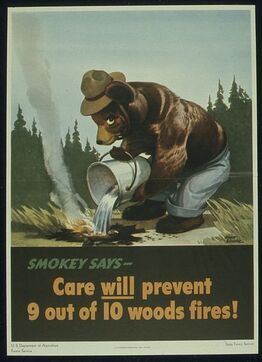 Smokey Bear was authorized by the US Forest Service on August 9, 1944. His creation was part of the effort to protect forests during WWII when so many of the nation’s firefighters were serving in the armed forces. It took two months before artist Albert Staehle delivered the first poster for the campaign. On it, Smokey wears jeans and a campaign hat while he pours a bucket of water on a campfire. The message reads, "Smokey says – Care will prevent 9 out of 10 forest fires!"
Smokey Bear was authorized by the US Forest Service on August 9, 1944. His creation was part of the effort to protect forests during WWII when so many of the nation’s firefighters were serving in the armed forces. It took two months before artist Albert Staehle delivered the first poster for the campaign. On it, Smokey wears jeans and a campaign hat while he pours a bucket of water on a campfire. The message reads, "Smokey says – Care will prevent 9 out of 10 forest fires!"
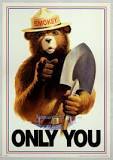 The slogan "Remember ... only YOU can prevent forest fires." Was created by the Wartime Advertising Council (later called the Ad Council) in 1947. The words “forest fires" were replaced with "wildfires" in 2001 in response to a massive outbreak of wildfires in natural areas other than forests and to clarify that the campaign was advocating the prevention of unplanned fires, not controlled burns or prescribed fires for conservation purposes.
The slogan "Remember ... only YOU can prevent forest fires." Was created by the Wartime Advertising Council (later called the Ad Council) in 1947. The words “forest fires" were replaced with "wildfires" in 2001 in response to a massive outbreak of wildfires in natural areas other than forests and to clarify that the campaign was advocating the prevention of unplanned fires, not controlled burns or prescribed fires for conservation purposes. In May 1950, firefighters quelling the Capitan Cap Fire in New Mexico’s Lincoln National found a five-pound, three-month old American black bear cub high up in a tree. Because his paws and hind legs had been burned, the little bear was named Hotfoot Teddy. He was sent to Santa Fe, to live in the home of New Mexico Department of Game and Fish Ranger Ray Bell and his family while a local veterinarian helped him recover. After that, he lived with the assistant director of the New Mexico Department of Game and Fish while the state game warden negotiated the cub to the Forest Service if he could be used in their conservation and wildfire prevention publicity programs. Somewhere along the line, the cub was renamed Smokey. At the end of June, 1950 the recovered, four-month old cub was flown to Washington, D.C., where a special exhibit was created for him in the National Zoo.
In May 1950, firefighters quelling the Capitan Cap Fire in New Mexico’s Lincoln National found a five-pound, three-month old American black bear cub high up in a tree. Because his paws and hind legs had been burned, the little bear was named Hotfoot Teddy. He was sent to Santa Fe, to live in the home of New Mexico Department of Game and Fish Ranger Ray Bell and his family while a local veterinarian helped him recover. After that, he lived with the assistant director of the New Mexico Department of Game and Fish while the state game warden negotiated the cub to the Forest Service if he could be used in their conservation and wildfire prevention publicity programs. Somewhere along the line, the cub was renamed Smokey. At the end of June, 1950 the recovered, four-month old cub was flown to Washington, D.C., where a special exhibit was created for him in the National Zoo.  Smokey Bear lived at the National Zoo for 26 years. During that time he received millions of visitors. So many letters were addressed to him that he got his own ZIP code (20252) in 1964. Because Smokey and his mate, Goldie Bear, never had cubs, the zoo added "Little Smokey" to their cage in 1971. Interestingly, Little Smokey was also an orphaned bear cub from the Lincoln Forest.
Smokey Bear lived at the National Zoo for 26 years. During that time he received millions of visitors. So many letters were addressed to him that he got his own ZIP code (20252) in 1964. Because Smokey and his mate, Goldie Bear, never had cubs, the zoo added "Little Smokey" to their cage in 1971. Interestingly, Little Smokey was also an orphaned bear cub from the Lincoln Forest.  Smokey Bear officially "retired" from his role as living icon on May 2, 1975, and Little Smokey was renamed Smokey Bear II. A year later, Smokey died. His body was returned to Capitan, New Mexico, where he is buried in the State Historical Park.
Smokey Bear officially "retired" from his role as living icon on May 2, 1975, and Little Smokey was renamed Smokey Bear II. A year later, Smokey died. His body was returned to Capitan, New Mexico, where he is buried in the State Historical Park. Author Jennifer Bohnhoff is a New Mexico native who remembers visiting Smokey Bear at the National Zoo when she was a child. Her book Summer of the Bombers tells a fictionalized story of the Cerro Grande fire that ravaged Los Alamos, New Mexico in 2000. An avid hiker, she asks you to help keep Smokey's memory by preventing fires while out in nature.
Author Jennifer Bohnhoff is a New Mexico native who remembers visiting Smokey Bear at the National Zoo when she was a child. Her book Summer of the Bombers tells a fictionalized story of the Cerro Grande fire that ravaged Los Alamos, New Mexico in 2000. An avid hiker, she asks you to help keep Smokey's memory by preventing fires while out in nature.
Published on August 09, 2023 13:18
August 2, 2023
Manuel Antonio Chaves, the Little Lion of New Mexico
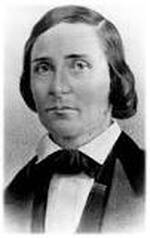 Chavez in 1848 Manuel Antonio Chaves is an interesting person not only because he lived and was influential in three eras of New Mexico’s history. Born at the end of the Spanish colonial period, he grew to manhood in the rough and wild days of the Santa Fe trade when Mexico ruled the land. He spent his mature years during the period when New Mexico was a territory of the United States. He personally witnessed and was often an important part of almost every major historical event which occurred during the period, including the Texan-Santa Fe Expedition, the Mexican War, rebellion and uprisings, the Civil War, and skirmishes with Utes, Navajos, and Apache. Although just 5 feet 7 inches and 140 pounds, Chaves was such a tough fighter that he was called El Leoncito, The Little Lion. Although not everyone today honors him, he was a man of his time who worked tirelessly for his people.
Chavez in 1848 Manuel Antonio Chaves is an interesting person not only because he lived and was influential in three eras of New Mexico’s history. Born at the end of the Spanish colonial period, he grew to manhood in the rough and wild days of the Santa Fe trade when Mexico ruled the land. He spent his mature years during the period when New Mexico was a territory of the United States. He personally witnessed and was often an important part of almost every major historical event which occurred during the period, including the Texan-Santa Fe Expedition, the Mexican War, rebellion and uprisings, the Civil War, and skirmishes with Utes, Navajos, and Apache. Although just 5 feet 7 inches and 140 pounds, Chaves was such a tough fighter that he was called El Leoncito, The Little Lion. Although not everyone today honors him, he was a man of his time who worked tirelessly for his people.  An early map of Atrisco Chaves was born October 18, 1818 in the village of Atrisco, which is now a part of Albuquerque. His family claimed lineal descendant from one of the Spanish conquistadores that came to New Mexico with Don Juan de Oñate in 1598. At the time of his birth, At that time, New Mexico was still a part of the Spanish Empire, an isolated northern border considered far from civilization. Hispanics and Native American tribes clashed, often violently in this frontier. As he likely spent most of his childhood tending the family’s sheep and working in their fields, he would have needed to keep a watchful eye out for raiding Navajos, who often stole livestock and children. Navajos weren’t the only raiders in New Mexico at the time. Ranchers mounted raids against the Navajo, Ute, Apache and Comanche, stealing children to trade or sell as slaves. Chaves joined his first raiding party when he was only 16 years old. It was a disaster. His group, which had approximately fifty men, accidentally stumbled into a ceremonial gathering of thousands of Navajos in what was probably Canyon de Chelly. Chaves was wounded by arrows seven times. The only survivor, he managed to make the nearly 200-mile trek home with no provisions. Chaves’ bravery led him to be a leader whenever ranchers needed someone to organize attacks or to retrieve stolen sheep or horses. In 1851, Chaves led 600 men on a raid “to pursue the Navajo Nation to their extermination or complete surrender.” Although there is no record of how that particular campaign went, it is clear that over the years Chaves and his men killed dozens of Ute and Apache and stole horses, jewelry, blankets, weapons and slaves. Chaves’ household servants had been captured from the Comanches while still children.
An early map of Atrisco Chaves was born October 18, 1818 in the village of Atrisco, which is now a part of Albuquerque. His family claimed lineal descendant from one of the Spanish conquistadores that came to New Mexico with Don Juan de Oñate in 1598. At the time of his birth, At that time, New Mexico was still a part of the Spanish Empire, an isolated northern border considered far from civilization. Hispanics and Native American tribes clashed, often violently in this frontier. As he likely spent most of his childhood tending the family’s sheep and working in their fields, he would have needed to keep a watchful eye out for raiding Navajos, who often stole livestock and children. Navajos weren’t the only raiders in New Mexico at the time. Ranchers mounted raids against the Navajo, Ute, Apache and Comanche, stealing children to trade or sell as slaves. Chaves joined his first raiding party when he was only 16 years old. It was a disaster. His group, which had approximately fifty men, accidentally stumbled into a ceremonial gathering of thousands of Navajos in what was probably Canyon de Chelly. Chaves was wounded by arrows seven times. The only survivor, he managed to make the nearly 200-mile trek home with no provisions. Chaves’ bravery led him to be a leader whenever ranchers needed someone to organize attacks or to retrieve stolen sheep or horses. In 1851, Chaves led 600 men on a raid “to pursue the Navajo Nation to their extermination or complete surrender.” Although there is no record of how that particular campaign went, it is clear that over the years Chaves and his men killed dozens of Ute and Apache and stole horses, jewelry, blankets, weapons and slaves. Chaves’ household servants had been captured from the Comanches while still children. Manuel Armijo By the time he was nineteen, New Mexico had become a province of an independent Mexico and the handsome, steely eyed and soft-voiced Chavez had gained a reputation as a capable fighter and fearless under fire. He was a crack shot with his Hawken rifle and a cunning scout. In August 1837, he was under the command of his cousin Manuel Armijo, who was putting down an uprising in Santa Fe that resulted in the murder of the governor, Albino Perez. Armijo was appointed to take Perez’ place and within two years, Chaves was commissioned as an ensign in the rural mounted militia.
Manuel Armijo By the time he was nineteen, New Mexico had become a province of an independent Mexico and the handsome, steely eyed and soft-voiced Chavez had gained a reputation as a capable fighter and fearless under fire. He was a crack shot with his Hawken rifle and a cunning scout. In August 1837, he was under the command of his cousin Manuel Armijo, who was putting down an uprising in Santa Fe that resulted in the murder of the governor, Albino Perez. Armijo was appointed to take Perez’ place and within two years, Chaves was commissioned as an ensign in the rural mounted militia.
In 1841, he rejoined his cousin when New Mexico was threatened by a group of invading Texans. Governor Armijo and his militiamen managed to capture the hapless armed force known as the Texan-Santa Fe Expedition and Chaves, serving as secretary and interpreter, most likely negotiated the surrender of about half of the Texans, who were sent south to Mexican prisons. The Mexican government awarded Chaves the cross of honor for his service.
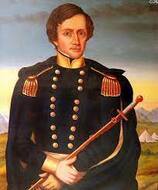 Stephen Watts Kearny Chaves was prepared to fight as a militia officer for Armijo in 1846, when the United States invaded during the Mexican-American War, but this time, Armijo surrendered and the Battle of Santa Fe ended before it began. Gen. Stephen Watts Kearny managed to take New Mexico without firing a shot. Chaves was jailed, on charges that he was attempting to foment an uprising in Santa Fe, but he was later acquitted of all charges.
Stephen Watts Kearny Chaves was prepared to fight as a militia officer for Armijo in 1846, when the United States invaded during the Mexican-American War, but this time, Armijo surrendered and the Battle of Santa Fe ended before it began. Gen. Stephen Watts Kearny managed to take New Mexico without firing a shot. Chaves was jailed, on charges that he was attempting to foment an uprising in Santa Fe, but he was later acquitted of all charges.
 In 1847, Chaves swore an oath of allegiance to the United States. He enlisted as a private in the U.S. “Emergency Brigade” that put down the Taos Revolt during which another New Mexican Governor, this time Charles Bent, was murdered. During the Siege of Pueblo de Taos, Chaves used his rifle butt to club down a Puebloan who was fighting with his captain, Ceran St. Vrain. Once the U.S. was firmly in control of the territory, they found themselves just as beleaguered by Native incursions as the Spanish and Mexican regimes before them. In 1851, Chaves took part in military campaigns, leading an expedition against the Navajos. He was commissioned to Captain to lead one of six companies during the Ute-Jicarilla War in 1855. By 1860, he held the rank of Lt. Colonel in the Second New Mexico Mounted Volunteers, a unit that was formed to fight the Navajos and Apache. In 1861, he was placed in command of Fort Fauntleroy (later renamed Fort Wingate.) During his tenure there, a fight caused by allegations of cheating during a horse race led to several Navajo deaths. a fight between his men and visiting Navajos in which a number of Navajos were killed. Kit Carson arrested Chaves after the fight, but since the circumstances of the killings unclear and Confederate forces were threatening New Mexico’s southern border, Colonel Edward Canby suspended the house arrest after two months.
In 1847, Chaves swore an oath of allegiance to the United States. He enlisted as a private in the U.S. “Emergency Brigade” that put down the Taos Revolt during which another New Mexican Governor, this time Charles Bent, was murdered. During the Siege of Pueblo de Taos, Chaves used his rifle butt to club down a Puebloan who was fighting with his captain, Ceran St. Vrain. Once the U.S. was firmly in control of the territory, they found themselves just as beleaguered by Native incursions as the Spanish and Mexican regimes before them. In 1851, Chaves took part in military campaigns, leading an expedition against the Navajos. He was commissioned to Captain to lead one of six companies during the Ute-Jicarilla War in 1855. By 1860, he held the rank of Lt. Colonel in the Second New Mexico Mounted Volunteers, a unit that was formed to fight the Navajos and Apache. In 1861, he was placed in command of Fort Fauntleroy (later renamed Fort Wingate.) During his tenure there, a fight caused by allegations of cheating during a horse race led to several Navajo deaths. a fight between his men and visiting Navajos in which a number of Navajos were killed. Kit Carson arrested Chaves after the fight, but since the circumstances of the killings unclear and Confederate forces were threatening New Mexico’s southern border, Colonel Edward Canby suspended the house arrest after two months.In 1862, Confederate General Henry Sibley led a force of Texans into New Mexico and Chaves found himself battling Texans once again. He and his militia fought at the battle of Valverde. Then, at the Battle of Glorieta Pass, he guided Major John Chivington's force to the Confederate supply train, where regular Union soldiers and New Mexico militia destroyed the supplies, forcing the Confederates to retreat back to Texas.
 Manuel Chaves later in life. After the Civil War, he was honorably discharged after allegations that he had sold Army wagons for his profit were dismissed. It seems from the record that Americans were constantly attempting to tarnish Chaves’ reputation but never had adequate proof to do so. But while the Civil War was over in New Mexico, the battle between Natives and Europeans was not. In 1863, a group of over 100 Navajos raided the Rio Grande valley near Socorro. They killed many people and drove off herds of cattle, horses, and sheep. When they took captive a son of Matías Contreras, a prominent local citizen, Chaves gathered a posse of 15 civilians. The Navajos attacked Chaves's group at a spring called Ojo de la Mónica. Chaves, recognized as the best marksman, fired his own rifle and also some of the others' while they reloaded for him. By nightfall, only Chaves and two other men remained alive and all their mounts had been killed. At dawn, with only three bullets left, the three men found that the Navajos had disappeared. Chaves later called the battle at Ojo de la Mónica his greatest fight. It most certainly helped result in the Long Walk, which ended the Indian wars in most of New Mexico.
Manuel Chaves later in life. After the Civil War, he was honorably discharged after allegations that he had sold Army wagons for his profit were dismissed. It seems from the record that Americans were constantly attempting to tarnish Chaves’ reputation but never had adequate proof to do so. But while the Civil War was over in New Mexico, the battle between Natives and Europeans was not. In 1863, a group of over 100 Navajos raided the Rio Grande valley near Socorro. They killed many people and drove off herds of cattle, horses, and sheep. When they took captive a son of Matías Contreras, a prominent local citizen, Chaves gathered a posse of 15 civilians. The Navajos attacked Chaves's group at a spring called Ojo de la Mónica. Chaves, recognized as the best marksman, fired his own rifle and also some of the others' while they reloaded for him. By nightfall, only Chaves and two other men remained alive and all their mounts had been killed. At dawn, with only three bullets left, the three men found that the Navajos had disappeared. Chaves later called the battle at Ojo de la Mónica his greatest fight. It most certainly helped result in the Long Walk, which ended the Indian wars in most of New Mexico.In 1876, he relocated to San Mateo, New Mexico, where he ranched. He built a home within a hundred feet of oak trees where he had rested in his flight from Canyon de Chelly as a wounded teenager. Immediately behind those trees he built a family chapel where he was buried after he died in January 1889. The blind and frail 70-year-old was laid to rest with two musket balls in his pocket. Manuel Antonio Chaves lived a tumultuous life, during which his beloved land was held by the Spanish Empire, the Mexican Republic and the United States. Both Native Americans and the Confederacy contested for the territory. Throughout it all, Chaves served as a staunch defender of his people, regardless of what flag he fought under.
 Manuel Chaves plays a large part in the Battle of Glorieta and a small part in The Worst Enemy, Jennifer Bohnhoff's middle grade historical novel. The Worst Enemy is book two of a trilogy set in New Mexico during the Civil War. The author is available for class visits and talks to groups who are interested in the history behind the story.
Manuel Chaves plays a large part in the Battle of Glorieta and a small part in The Worst Enemy, Jennifer Bohnhoff's middle grade historical novel. The Worst Enemy is book two of a trilogy set in New Mexico during the Civil War. The author is available for class visits and talks to groups who are interested in the history behind the story.
Published on August 02, 2023 23:00
July 19, 2023
Gabriel Paul, Civil War Hero
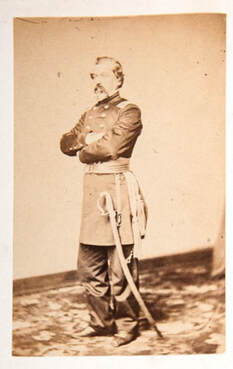 Just about anyone can name a general from the Civil War. Gabriel René Paul’s name doesn’t come as readily as others, but he was an important figure and his story is an interesting one.
Just about anyone can name a general from the Civil War. Gabriel René Paul’s name doesn’t come as readily as others, but he was an important figure and his story is an interesting one.Gabriel René Paul was born on March 22, 1813, in St. Louis, Missouri, a city that had been founded by his maternal grandfather, the prosperous fur trader René-Auguste Chouteau, Jr. His father, Rene Paul, was a military engineer who had served as an officer in Napoleon’s army and who was wounded at Trafalgar. Paul followed in his father’s military footsteps, entering the United States Military Academy, commonly known as West Point, when he was only 16 years old. He graduated in the middle of the Class of 1834, ranked 18th of the 36 graduates.
After graduating, Paul was commissioned as a lieutenant in the 7th United States Infantry. He served in Florida in the last 1830s and early 1840s, where he participated in the Seminole Wars. Like many of the other men who would become generals during the Civil War, he served under both Zachary Taylor and Winfield Scott during the Mexican-American War. He saw battle action at Fort Brown, Monterrey, Vera Cruz, Cerro Gordo, Churubusco, Molino del Rey and Chapultepac. He was given an honorary promotion, or brevet, to the rank of major when he led a storming party and captured a Mexican army flag during the battle of Chapultepac. After the signing of the Treaty of Guadalupe-Hidalgo, Paul served in several different frontier army posts and participated in several expeditions up the Rio Grande and into Utah.
When the Civil War began, Paul was a Major in the 8th Infantry Regiment stationed at Fort Union in the New Mexico Territory. In December 1861 he was appointed Colonel of the 4th New Mexico Volunteers and commander of the fort. After the Battle of Valverde, Colonel E.R.S. Canby, the commander of all Union troops in New Mexico, sent a message to Paul telling him to hold the fort at all costs. However, when Colonel John Potts Slough arrived with his Colorado volunteers, he announced that he outranked Paul because he had been commissioned a few days earlier than Paul had. Slough deliberately ignored Canby’s orders and proceeded south with his troops, who engaged in the Battle of Glorieta, leaving Paul to guard the fort.
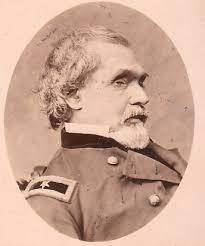 A portrait taken after Gettysburg. If you look closely, it is clear that his eye socket is empty. In late May 1862, Paul mustered out of the New Mexico Volunteers, and holding the rank of Major in the Regular Army, was sent east to work on the defenses of Washington. While he was stationed there, his wife went to the White House and pleaded President Lincoln for a promotion for her husband. Lincoln documented the meeting with a note that read “Today Mrs. Major Paul calls and urges appointment of her husband as a Brigadier [General]. She is a saucy woman and will keep tormenting me until I may have to do it.” Less than two weeks later, President Lincoln signed Gabriel Paul’s commission as a Brigadier General of volunteers. He was given the assignment of brigade commander in the First Army Corps, and he led troops at Fredericksburg and at Chancellorsville.
A portrait taken after Gettysburg. If you look closely, it is clear that his eye socket is empty. In late May 1862, Paul mustered out of the New Mexico Volunteers, and holding the rank of Major in the Regular Army, was sent east to work on the defenses of Washington. While he was stationed there, his wife went to the White House and pleaded President Lincoln for a promotion for her husband. Lincoln documented the meeting with a note that read “Today Mrs. Major Paul calls and urges appointment of her husband as a Brigadier [General]. She is a saucy woman and will keep tormenting me until I may have to do it.” Less than two weeks later, President Lincoln signed Gabriel Paul’s commission as a Brigadier General of volunteers. He was given the assignment of brigade commander in the First Army Corps, and he led troops at Fredericksburg and at Chancellorsville.At Gettysburg, he was transferred to a brigade in 2nd Division, where he led the soldiers of the 16th Maine, 13th Massachusetts, 94th and 104th New York, and 107th Pennsylvania Infantries as they threw up makeshift barricades and entrenchments in front of the Lutheran Seminary building during the early parts of the first day of fighting. When some 8,000 Confederates backed with 16 cannons began making significant inroads into the Union First Corps’s exposed right flank along a prominent rise of ground known as Oak Hill Ridge, the Second Corps was called in. When Henry Baxter’s brigade was nearly out of ammunition, Gabriel Paul’s brigade was brought forward to take its place. It was soon after his men had arrived on Oak Hill that he was struck in the head by a bullet that entered behind his right eye, passed through his head, and exited through his left eye socket. The men who watched him fall believed that Paul had been killed and left him where he lay as the battle intensified. Late in the afternoon, the First Corps and Eleventh Corps troops surrounding Paul’s brigade broke and began to retreat. Baxter’s and Paul’s men followed. When the division reformed on Cemetery Hill, it was discovered that 1,667 of the approximately 2,500 men who had gone into battle that morning had become casualties. Paul was one of the 776 men killed, wounded, or missing from his brigade.
When soldiers returned to the field to search for living among the dead, they found Paul and carried him to a field hospital in the rear. Later, Paul was brevetted a Brigadier General in the Regular Army “For Gallant and Meritorious Service at the Battle of Gettysburg.” He was completely blind and his sense of smell and hearing were seriously impaired for the rest of his life, and he suffered frequent headaches and seizures, yet he refused to leave the service. He worked as Deputy Governor of the Soldier’s Home near Washington, and then was the administrator of the Military Asylum at Harrodsburg, Kentucky. On December 20, 1866, he finally retired.
 For the next twenty-two years, Gabriel Paul’s health deteriorated. During the final years of his life, seizures were an almost daily occurrence, and he suffered up to six epileptic attacks a day. When he died on May 5, 1886 twenty-two years, ten months, and five days after the battle of Gettysburg, his doctor pronounced that the cause of death was an “epileptiform convulsion, the result of a wound received at the battle of Gettysburg, Pa.” He was buried in Section 1, Lot 16 of Arlington National Cemetery.
For the next twenty-two years, Gabriel Paul’s health deteriorated. During the final years of his life, seizures were an almost daily occurrence, and he suffered up to six epileptic attacks a day. When he died on May 5, 1886 twenty-two years, ten months, and five days after the battle of Gettysburg, his doctor pronounced that the cause of death was an “epileptiform convulsion, the result of a wound received at the battle of Gettysburg, Pa.” He was buried in Section 1, Lot 16 of Arlington National Cemetery.The Battle of Gettysburg claimed the lives of more generals than any other battle in the American Civil War. Six general officers fell either dead or fatally wounded at both Antietam and Franklin. By most accounts, nine generals were either killed or listed among the mortally wounded at Gettysburg. The casualties include four Union (John Reynolds, Samuel Zook, Stephen Weed, Elon Farnsworth) and five Confederates (Lewis Armistead, Paul Semmes, William Barksdale, Dorsey Pender, Richard Garnett.) If we include Strong Vincent, who fell atop Little Round Top and who was posthumously honored with a promotion to brigadier general, the number climbs to ten, five for each side. I think that Gabriel Paul should be included in this list, even though he didn’t die until much later. He represents the countless many whose lives ended due to the Civil War, even if they didn’t die.
 Gabriel Rene Paul is a background character in The Worst Enemy, book 2 of Jennifer Bohnhoff's trilogy Rebels Along the Rio Grande. Written for middle grade readers and above, the trilogy tells the story of the Civil War in New Mexico Territory. It is published by Kinkajou Press, a division of Artemesia Publishing. Contact the publisher for class set discounts and teacher's guides.
Gabriel Rene Paul is a background character in The Worst Enemy, book 2 of Jennifer Bohnhoff's trilogy Rebels Along the Rio Grande. Written for middle grade readers and above, the trilogy tells the story of the Civil War in New Mexico Territory. It is published by Kinkajou Press, a division of Artemesia Publishing. Contact the publisher for class set discounts and teacher's guides.
Published on July 19, 2023 23:00
July 12, 2023
The Half Dime
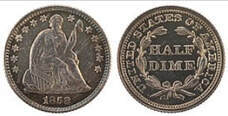 Coins aren’t common currency anymore. In these days of debit and credit cards, most people don’t carry a pocketful of change. When they do, they find that cashiers don’t know what to do with coins. Computerized cash registers have made counting back change a lost skill.
Coins aren’t common currency anymore. In these days of debit and credit cards, most people don’t carry a pocketful of change. When they do, they find that cashiers don’t know what to do with coins. Computerized cash registers have made counting back change a lost skill.
But most of us still recognize coins. Pennies and dimes haven’t changed much in the past few years. The nickel got a bit of an update, with a larger, half forward facing Thomas Jefferson replacing the old side view. Quarters frequently change, with women and states replacing the eagle. Even with these changes of design, most Americans over the age of five can identify their country’s coinage.
America had some coins in the past that are no longer minted. The half dime is one of them.
 The half dime, or half disme (pronounced deem), was a silver coin that had a value of five cents. It might have been the first coin struck by the United States Mint under the Coinage Act of 1792; some experts consider those first strikes to be practice pieces and therefore not real coins. It is a small coin, half the size of a ten-cent piece. Through the years, the pictures on the half dime changed. Early coins had a picture of the face of Liberty, her hair flowing backwards as if she were making great progress. By the 1830s, Liberty’s face had been replaced by a full Liberty seated on a rock (Plymouth Rock? I found no sources that told me.) and holding a shield. 84,828,478 Seated Liberty half dimes were struck for circulation in the mints at Philadelphia, San Francisco and New Orleans between 1837 and 1873.
The half dime, or half disme (pronounced deem), was a silver coin that had a value of five cents. It might have been the first coin struck by the United States Mint under the Coinage Act of 1792; some experts consider those first strikes to be practice pieces and therefore not real coins. It is a small coin, half the size of a ten-cent piece. Through the years, the pictures on the half dime changed. Early coins had a picture of the face of Liberty, her hair flowing backwards as if she were making great progress. By the 1830s, Liberty’s face had been replaced by a full Liberty seated on a rock (Plymouth Rock? I found no sources that told me.) and holding a shield. 84,828,478 Seated Liberty half dimes were struck for circulation in the mints at Philadelphia, San Francisco and New Orleans between 1837 and 1873.In the 1860s, the use of nickel to replace silver in coinage became a popular lobbying point. In 1865m tge treasury became producing a new three cent coin made out of a copper-nickel alloy. The following year, a five cent pieces was added to American coinage. This new coin was larger than the silver half dime and less easily lost, making it the more popular of the two redundant coins. The half dime was discontinued in 1873.
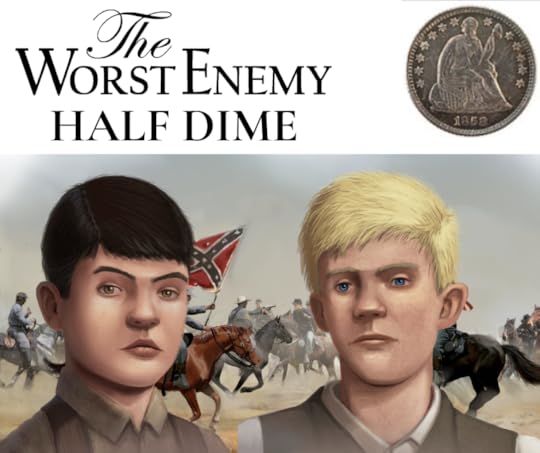 In The Worst Enemy, Raul Atencio gives Jemmy Martin a half dime as payment for caring for his brother Arsenio. Since the Confederate soldiers and their teamsters had not been paid since leaving Texas, a half dime was a rare and useful gift. Later in the book, Jemmy uses that coin to pay for something that might save another boy’s life.
In The Worst Enemy, Raul Atencio gives Jemmy Martin a half dime as payment for caring for his brother Arsenio. Since the Confederate soldiers and their teamsters had not been paid since leaving Texas, a half dime was a rare and useful gift. Later in the book, Jemmy uses that coin to pay for something that might save another boy’s life.
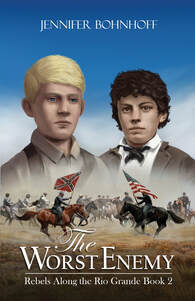 Jennifer Bohnhoff is a former middle and high school teacher who now writes novels for adults and middle grade readers.
Jennifer Bohnhoff is a former middle and high school teacher who now writes novels for adults and middle grade readers.The Worst Enemy, is book 2 of Rebels Along the Rio Grande, her middle grade trilogy set in New Mexico during the Civil War. It is scheduled for release by Kinkajou Press, a division of Artemesia Publishing, on August 15, 2023 but can be preordered on Bookshop.
 The first book in the series, Where Duty Calls, was a finalist for both the New Mexico Presswomen's Zia Award and the Western Writers of America's Spur Award. It can be ordered in paperback or ebook here. A free, downloadable teachers guide is available through the publisher.
The first book in the series, Where Duty Calls, was a finalist for both the New Mexico Presswomen's Zia Award and the Western Writers of America's Spur Award. It can be ordered in paperback or ebook here. A free, downloadable teachers guide is available through the publisher. Book three, tentatively titled The Famished Country, will be published in spring of 2024.
Published on July 12, 2023 23:00



